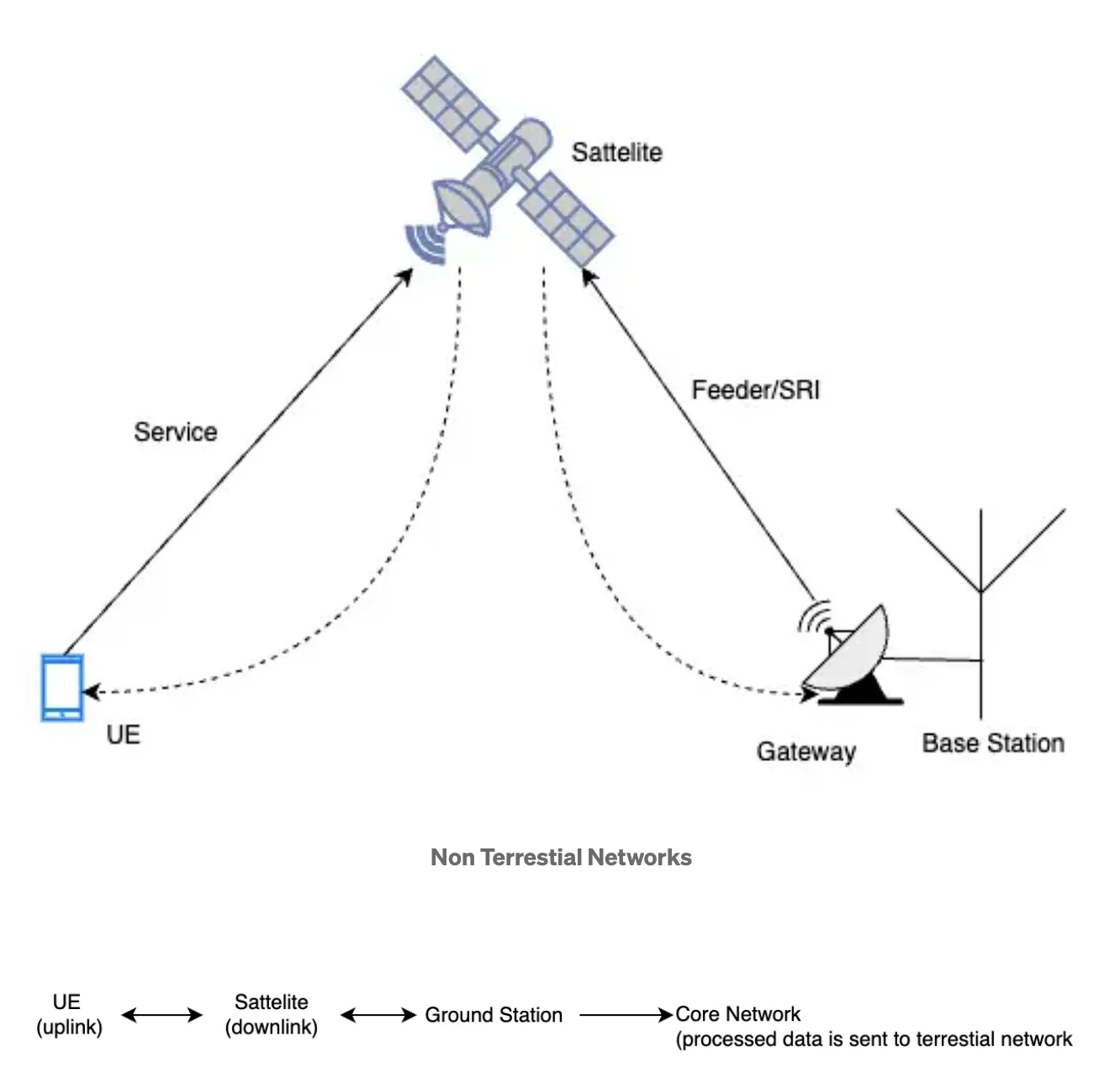Introduction
As 5G evolves, Non-Terrestrial Networks (NTN) are emerging as a key enabler for global, seamless connectivity — especially in regions beyond the reach of ground-based infrastructure. NTN brings the sky into the 5G equation, using satellite systems and high-altitude platforms to deliver coverage where traditional cell towers can’t reach.
These systems are crucial for:
Connecting remote or rural areas
Enabling communication in disaster zones
Supporting mobile connectivity in aviation, maritime, and defense scenarios
Types of Satellites in NTN
GEO (Geostationary Earth Orbit):~35,786 km above Earth, GEO satellites rotate in sync with the planet. They stay fixed in the sky relative to a point on Earth and offer continuous coverage to large areas — but with high latency (~500 ms round-trip).
MEO (Medium Earth Orbit) : Orbiting between ~8,000 km and 20,000 km, MEO satellites offer a middle ground in terms of coverage and latency. Used in systems like GPS.
LEO (Low Earth Orbit) : Flying at ~500–2000 km, LEO satellites provide low latency (~20–40 ms) and are ideal for real-time apps. But since they move quickly across the sky, a large constellation is needed for continuous service (e.g., Starlink, OneWeb).
HAPS (High-Altitude Platform Systems): Though not satellites, HAPS operate in the stratosphere (~20 km), using balloons or drones to provide localized NTN coverage. They’re useful for disaster relief or targeted rural deployments.
Unlike terrestrial networks, NTN introduces new technical challenges:
Long signal propagation delays (especially with distant satellites like GEO)
Doppler shifts from fast-moving satellites (mainly LEO)
Timing and synchronization issues due to variable satellite movement and distance

Key Differences Between NTN and Terrestrial 5G
Propagation Delay: Terrestrial 5G has delays around ~1–5 ms, while NTN can experience up to 400+ ms, especially with GEO satellites.
Doppler Shift: Minimal in ground networks but significantly high in LEO-based NTN systems due to satellite movement.
Mobility: Terrestrial handovers happen between nearby cells; NTN mobility involves tracking beams or switching between satellites.
Infrastructure: 5G networks rely on ground towers and fiber, while NTN uses satellites, feeder links, and gateways.
Stability: Terrestrial links are stable while NTN links may vary with atmospheric conditions and satellite dynamics.